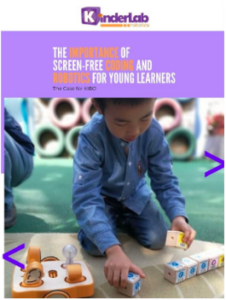Getting Smart: How Hands-On Robotics Brings Science Lessons to Life
In this article, two creative educators from Massachusetts, Barbara Tennyson from Needham Public Schools, and Katie Blagden from Beverly Public Schools, share their use of KIBO in bringing their life sciences instructions to life.
They describe that is is sometimes difficult to incorporate hands-on learning into earth and life science units. Many life science units focus on looking at plants and animals and reading about their environments, leaving out the integral hands-on experience. “As elementary STEAM educators, we have both developed tech-infused lessons, incorporating engineering and robotics, that increase student engagement and bring earth and life sciences to life. These projects are rigorous in teaching the subject at hand, and their playful side encourages collaboration both during and after the lesson.”
Barbara discusses her ‘Windy Day’ Project, where they design a sequence of actions for their KIBO to withstand a windy day. They design and construct their KIBO to look and act like a windy day.
Katie uses KIBO in her “How do animals survive in the winter?” teaching. In Katie’s first-grade life science lessons combines animal survival and coding the KIBO robot. Students research animals, esign their robot to look as the animal they researched, and program their ‘animal’ to act as it would in the wild.
See the full article.



















